Colours, Textures and more…
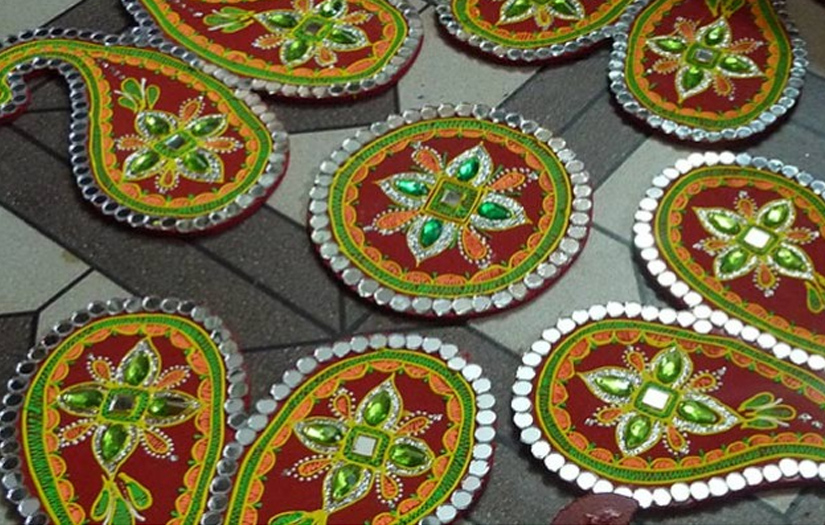
Every craft has a story to tell, a history, a reason for existence… Some craft objects like fabrics and weapons originated out of the survival instinct; some, like terracotta vessels, metal tools etc were ingenuous solutions to household problems; some were purely aesthetic needs, evolving out of the need to excel, while some were created to please gods or even kings.
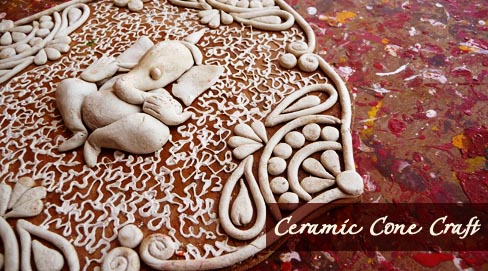
Cone Ceramic Indore
Some are leisure pursuits taken ahead and converted into professions, like the cone ceramic craft practiced in Indore, Madhya Pradesh.
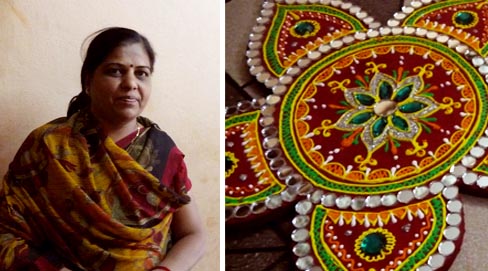
Sheela Porwal learned this craft during her school days and it became a hobby for her until a few years ago, when she decided to convert her love for this art and practiced skill into a full-fledged business. Soon, her husband joined her in this endeavour and today they are a wonderful example of women empowerment in a male dominated society.
Ms. Sapna and her elder sister, who were the first to ones to take up their hobby professionally, became the pioneers of this craft in Indore, and today they have achieved international acclaim. Another such craftswoman is Ritu, whose inclination towards art helped her establish herself in this profession.
Many women practice this craft in Indore, to transform the mundane to the ornamental, by embellishing everyday objects and creating beautiful things, from pen stands and jewellery and CD boxes to picture frames and paintings.
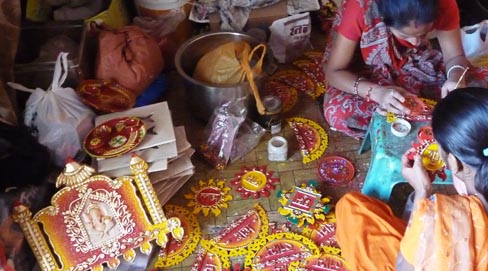
Boxes, pen stands and wall hanging bases are made out of fibreboards (MDF), at the local carpenters’ workshops, based on designs according to the client’s requirement or the artisans’ creativity. These bare boxes and other articles are brought to the homes of craftswomen, where many gather to work together.
The process of decorating these articles requires a mix of planned direction and some spontaneous creativity. A combination of fine and strong relief work, combined with pretty little sequins and mirrors, gives this craft a kitschy yet charming quality.
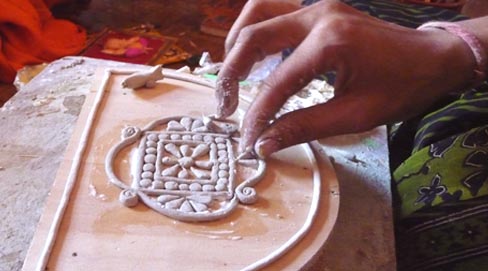
The craftswomen create three dimensional motifs on the surface of the articles with kneaded clay. The clay is rolled into thick and thin strands and coiled and shaped into flowers, paisleys, circles and swirly lines which are pasted to the surface of MDF with adhesive. The clay takes about two days to dry, after which it is painted with acrylic colours in bright hues, golden being a popular choice.
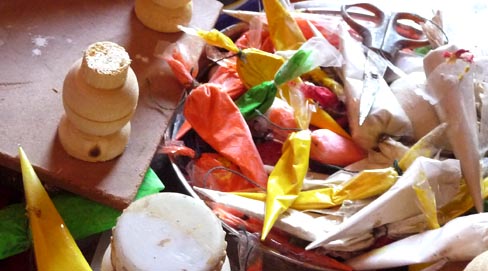
Cones of coloured ceramic paste, available in the local market, are used to draw fine textures and motifs reminiscent of henna patterns, a subject loved by all women. A coat of varnish makes the artwork waterproof. The pieces are further adorned with colourful sequins, beads of all shapes and sizes, sparkly glitter powder and tiny mirrors, adding finishing touch to the ornate work.
The designs change with the flavour of festivals. Decorated Puja plates are in demand around Rakshabandhan, while Rangoli designs and Ganesha images take the forefront during Diwali.
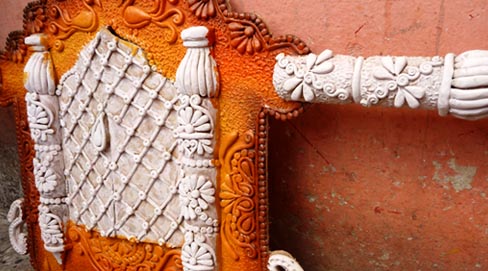
Resourceful as women are, they also put waste material like plastic bottles, boxes, thread reels etc to good use, by turning them into useful objects with their knack of beautification.
Every craft has a story to tell … This one emerged from the households of enterprising women in the age of machines and uniformity, a contemporary handicraft thriving in the crowd of clones.

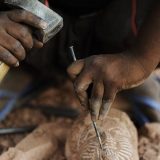

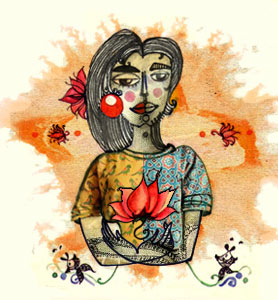
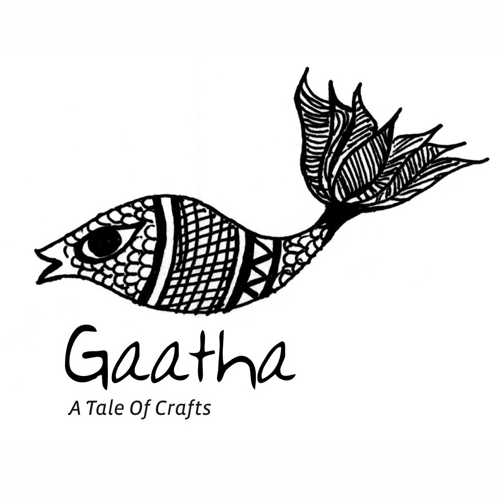


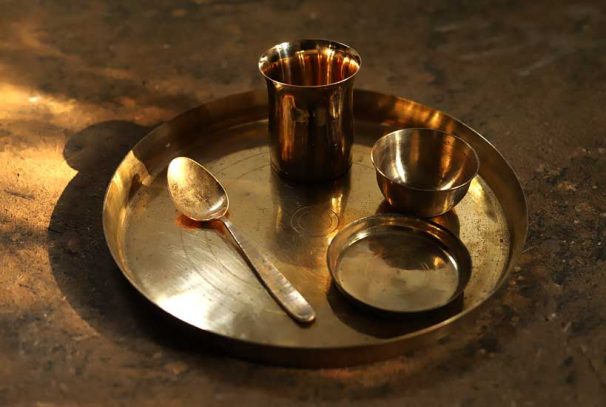
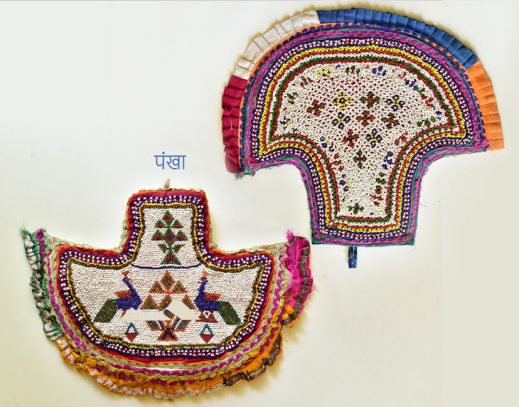
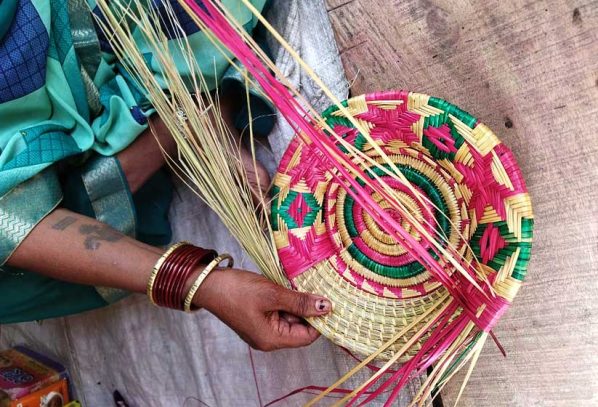

hetal Desai
Your ideas are great I also do the same work
How do you make the ceramic cones or where do you get them from
Can you send wodden cuttings to vapi in guj
Reply me by email
[email protected]
indrayani kadam
your ideas r too great i do the same work can u send me some more picture i will send my ceramic work photo to you
bhavika
I want to learn ceremic work, clay art.
I am living in udaipur reagion,if can give me any address or teacher who can teach me this work.
mukta rampuria
I want to learn this item .I m frm west bengal cn u plz mail me ur contact no by e mail .thanku
mukta rampuria
U work is beautiful I want to learn this clay work I m frm west bengal cn u plz mail me ur contact no